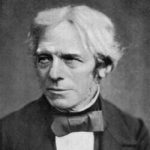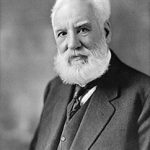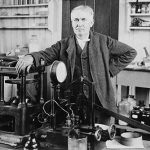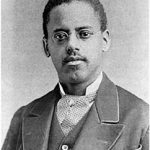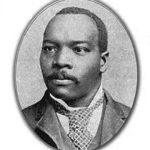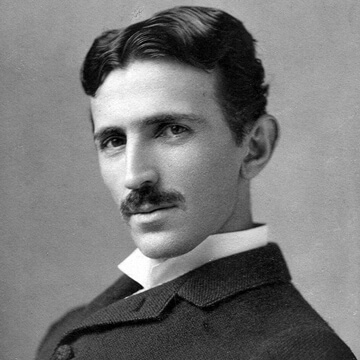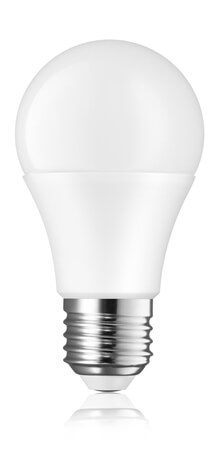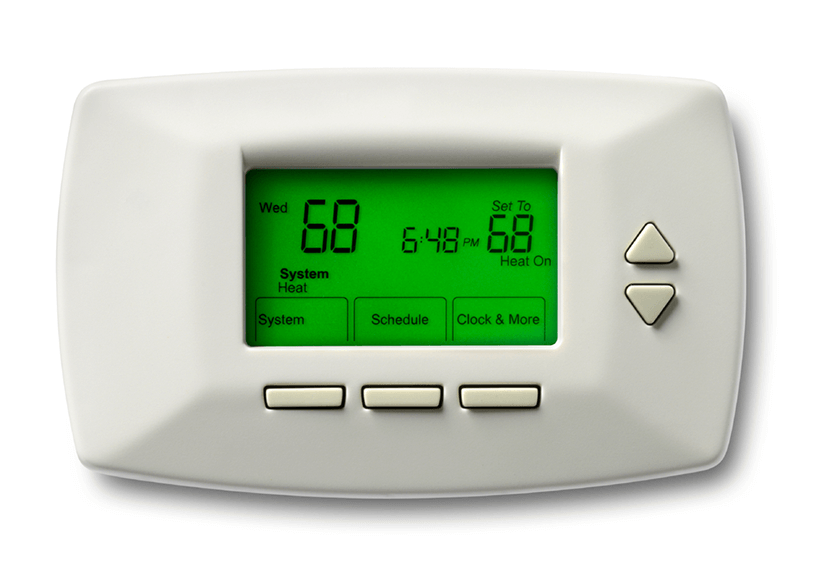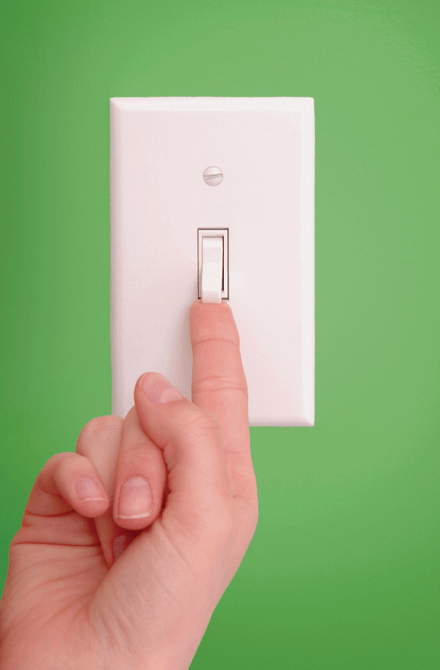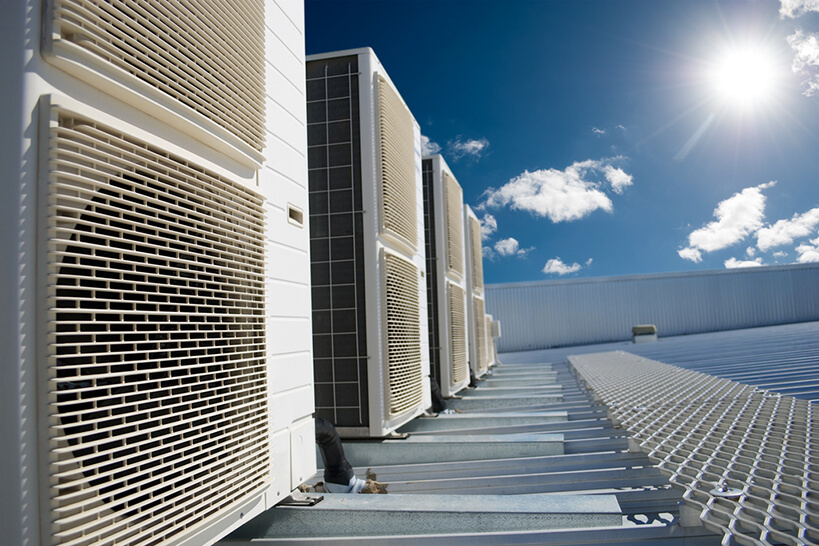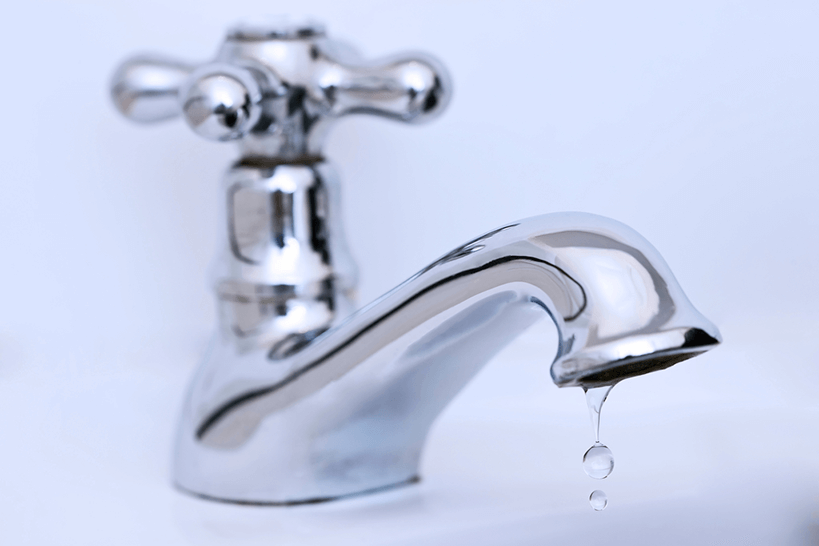Electricity FAQ (Frequently Asked Questions)
Neither! In the wires of an electrical circuit, the electrons are always jiggling around. When a circuit is closed to run an appliance or a light bulb, the electrons jiggle a lot and travel through the wire. When the circuit is open, all the electrons just jiggle where they are—kind of like running in place.
One lightning strike can carry between 100 million and 1 billion volts—as much electricity as 2.5 million car batteries.
Ben Franklin probably did not do his famous kite experiment the way it is usually portrayed. (Franklin never wrote about it himself, and the only description we have of it was written by another scholar, Joseph Priestley, 15 years later.) Franklin believed lightning was a flow of electricity taking place in nature. He knew of electricity’s dangers, and would probably not have risked being struck by lightning by flying his kite during a storm. It is more likely that Franklin flew his kite before the storm occurred, and that his famous key gave off an electric spark by drawing small electrical charges from the air.
Yes! An electric eel uses chemicals in its body to manufacture electricity. A large electric eel can produce a charge of up to 650 volts, which is more than five times the shocking power of a household outlet.
Producing Electricity
The energy resources used to generate electricity can be divided into two categories:
Nonrenewable Resources
Nonrenewable resources cannot be replenished. We can make these supplies last longer by using them wisely, but when they are gone we will not have any more.
Fossil Fuels
The majority of electricity used in the United States is generated at power plants that burn fossil fuels to heat water and make steam. The steam is highly pressurized and directed at turbine blades to make them spin.
The three forms of fossil fuels are coal, oil, and natural gas. They are known as fossil fuels because they were formed in the earth from the remains of organic matter like animals or plants that lived long ago.
 Coal is a hard, black, rock-like substance made up of carbon, hydrogen, oxygen, nitrogen, and sulfur. The precursor to coal, called peat, is used as an energy source in many countries. Coal is found in many parts of the U.S. and throughout the rest of the world. Coal is extracted from the ground at large mines.
Coal is a hard, black, rock-like substance made up of carbon, hydrogen, oxygen, nitrogen, and sulfur. The precursor to coal, called peat, is used as an energy source in many countries. Coal is found in many parts of the U.S. and throughout the rest of the world. Coal is extracted from the ground at large mines.
 Oil is a liquid fossil fuel, sometimes also called petroleum. It is found underground within porous rocks. Oil rigs must drill down to deposits deep below the earth’s surface to obtain oil. About one fifth of the oil and petroleum products (such as gasoline, heating oil, and other products) used in the United States comes from outside our country.
Oil is a liquid fossil fuel, sometimes also called petroleum. It is found underground within porous rocks. Oil rigs must drill down to deposits deep below the earth’s surface to obtain oil. About one fifth of the oil and petroleum products (such as gasoline, heating oil, and other products) used in the United States comes from outside our country.
 Natural gas is made up primarily of a gas called methane. Methane gas is highly flammable and burns very cleanly. Natural gas is usually found underground along with oil. Natural gas supplies are abundant from sources in the United States and Canada.
Natural gas is made up primarily of a gas called methane. Methane gas is highly flammable and burns very cleanly. Natural gas is usually found underground along with oil. Natural gas supplies are abundant from sources in the United States and Canada.
Nuclear Power
 Nuclear power plants use the heat from splitting atoms to convert water into the steam that turns turbines. These plants rely on uranium, a type of metal that must be mined from the ground and specially processed. Fuel rods containing uranium are placed next to each other in a machine called a nuclear reactor. The reactor causes the uranium atoms to split, and in so doing, they release a tremendous amount of heat.
Nuclear power plants use the heat from splitting atoms to convert water into the steam that turns turbines. These plants rely on uranium, a type of metal that must be mined from the ground and specially processed. Fuel rods containing uranium are placed next to each other in a machine called a nuclear reactor. The reactor causes the uranium atoms to split, and in so doing, they release a tremendous amount of heat.
Renewable Resources
Renewable energy resources can be replenished in a short period of time, so they will never be all used up. Energy companies throughout the country are using renewable resources more and more to generate electricity.
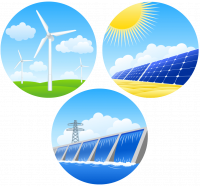
Biomass
Biomass is organic matter, such as agricultural waste, and wood chips and bark left over when lumber is produced. Biomass can be burned to heat water to make steam, which turns a turbine to make electricity. It can also be converted into a gas, which can be burned to do the same thing.
 Biomass includes energy crops like wood, straw, and other crops grown primarily for use as a fuel. Energy crops are renewable, but some, like trees, take a long time to grow. Farmers can grow trees on some of their land instead of wheat or other kinds of food. The wood is harvested regularly, cut into small chips and burned to provide heat or run small electric power plants.
Biomass includes energy crops like wood, straw, and other crops grown primarily for use as a fuel. Energy crops are renewable, but some, like trees, take a long time to grow. Farmers can grow trees on some of their land instead of wheat or other kinds of food. The wood is harvested regularly, cut into small chips and burned to provide heat or run small electric power plants.
A fuel generated from biomass is methane gas, a by–product of decay in landfills. As garbage rots in the ground, it gives off gases that can be collected and burned to produce heat or electricity.
Geothermal Energy
 The word geothermal comes from the Greek words geo, for earth, and therme, for heat. So geothermal means “earth heat.” Geothermal energy is steam (or hot water that has been converted to steam) from deep inside the earth.
The word geothermal comes from the Greek words geo, for earth, and therme, for heat. So geothermal means “earth heat.” Geothermal energy is steam (or hot water that has been converted to steam) from deep inside the earth.
Our planet’s interior is very hot—at its core, 4000 miles deep, temperatures may reach over 9000°F. This heat is continuously conducted from the earth’s core to the surrounding layer of rock, the mantle.
There are some places around the earth where magma (hot molten earth from the mantle) pushes up through cracks into the crust near the earth’s surface. Magma can heat nearby rock and water as hot as 700°F. Some of this hot water reaches the earth’s surface as hot springs or geysers, and some stays trapped deep underground in cracks and porous rocks. This hot water can be used directly or converted into steam to turn turbines that generate electricity.
Hydrogen
 Hydrogen is a colorless, odorless gas. Hydrogen can be converted into electricity through a chemical reaction in a device called a fuel cell. Converting hydrogen into electricity produces no pollution—only water and heat.
Hydrogen is a colorless, odorless gas. Hydrogen can be converted into electricity through a chemical reaction in a device called a fuel cell. Converting hydrogen into electricity produces no pollution—only water and heat.
If the hydrogen comes from a renewable resource like landfill gas, fuel cells are considered renewable. However, if it comes from a nonrenewable resource like fossil fuels, fuel cells are considered nonrenewable. Whether a fuel cell is using a renewable energy source depends on the source of the hydrogen fuel.
Today, there are already some cars that run on hydrogen. In the future, hydrogen will be used to fuel vehicles and airplanes and to provide electricity to buildings.
Hydropower
 Hydroelectric plants use the power of falling water to turn the turbines that help generate electricity. Water that is stored behind a dam is released and directed through special tubes to flow against the blades of turbines and make them turn. Most hydropower facilities are found in hilly or mountainous areas. The most famous hydroelectric facility in the country is Hoover Dam.
Hydroelectric plants use the power of falling water to turn the turbines that help generate electricity. Water that is stored behind a dam is released and directed through special tubes to flow against the blades of turbines and make them turn. Most hydropower facilities are found in hilly or mountainous areas. The most famous hydroelectric facility in the country is Hoover Dam.
Ocean Energy
 Ocean energy is a form of hydropower. Oceans cover more than 70 percent of the earth’s surface, making them the world’s largest solar collectors. The ocean stores thermal (heat) energy, which can be used to generate electricity using special turbine generators.
Ocean energy is a form of hydropower. Oceans cover more than 70 percent of the earth’s surface, making them the world’s largest solar collectors. The ocean stores thermal (heat) energy, which can be used to generate electricity using special turbine generators.
The energy of the ocean’s waves and tides can also be used to generate electricity with dams that force ocean water through turbines, or with buoys embedded with turbines that spin as they shift with the movement of waves. This is called tidal energy, or wave power. The world’s first wave power station was built on the Scottish island of Islay. Other wave power stations are located in Mutriku Bay, Spain; Jaffa Port, Israel; Kaneohe Bay near Oahu, Hawaii; and Cobscook Bay on the East Coast of the United States near Eastbrook, Maine.
Scientists and engineers around the world are working on systems to use the ocean’s energy on a large scale.
Solar Energy
 Solar energy is generated without a turbine or electromagnet. Special panels of solar cells, or modules, can capture sunlight and convert it directly into electricity. These panels are known as photovoltaic, or PV. (Photo is Greek for light, and voltaic pertains to electricity.) The electricity they produce can be used right away, fed into the power grid for others to use, or stored in a battery so it is also available on cloudy days.
Solar energy is generated without a turbine or electromagnet. Special panels of solar cells, or modules, can capture sunlight and convert it directly into electricity. These panels are known as photovoltaic, or PV. (Photo is Greek for light, and voltaic pertains to electricity.) The electricity they produce can be used right away, fed into the power grid for others to use, or stored in a battery so it is also available on cloudy days.
Wind Power
 Wind power is renewable energy that uses the force of the wind to spin turbines. These spinning turbines generate electricity.
Wind power is renewable energy that uses the force of the wind to spin turbines. These spinning turbines generate electricity.
Most wind power is produced at wind farms, which are large groups of turbines in consistently windy locations. A very large wind farm can generate enough electricity for all the homes in a city of about one million people. Small wind turbines can be used for individual homes, businesses, and boats. They can be used to pump water, or the electricity can be stored in large batteries for use at another time.
Pioneers of Electricity
Electric Vehicles
Electric vehicle (EV) technologies have grown a lot since 1999 when the first hybrid EV was introduced. Today, a variety of all-electric EVs and hybrid gasoline/electric EVs are available, and industry experts anticipate there will be over a million EVs on the roads this decade. EVs are popular for many reasons:

- They help reduce pollution.
- They cost less to run than gasoline vehicles.
- They help reduce our dependency on gasoline.
Battery Electric Vehicles
Battery EVs run entirely on electrical energy. Instead of a fuel tank, batteries store the electricity that is used to operate the vehicle. These batteries can be recharged by plugging the vehicle into a special high-voltage charging station or standard 120-volt or 240-volt household outlets. It takes anywhere from 2 to about 20 hours to recharge the battery, depending on the vehicle’s charger and the voltage used. The batteries store the electricity until the vehicle is driven.
 Early types of battery EVs included golf carts, scooters, and other vehicles used for short trips at low speeds. With rapid industry growth this decade, battery EVs can accommodate both city and highway driving needs. Smaller models designed for urban use can travel 30–75 mph and go 50–85 miles on a charge. The high-end Tesla can reach speeds of 150 mph and travel more than 300 miles on a single charge.
Early types of battery EVs included golf carts, scooters, and other vehicles used for short trips at low speeds. With rapid industry growth this decade, battery EVs can accommodate both city and highway driving needs. Smaller models designed for urban use can travel 30–75 mph and go 50–85 miles on a charge. The high-end Tesla can reach speeds of 150 mph and travel more than 300 miles on a single charge.
Under the hood, a battery EV consists of an electric motor, one or more controllers, and batteries. The controller governs the amount of electricity that flows from the batteries to the motor when the driver steps on the accelerator. The motor changes electrical energy from the batteries to mechanical energy, which makes the vehicle move.
 Driving a battery EV down the road produces no pollution at all. Even when pollution related to power plant electricity production is factored in, these EVs produce less pollution than gasoline- or diesel-powered vehicles. Battery EVs are also more efficient than gasoline or diesel vehicles, if you compare the energy used in creating gasoline at a refinery to producing electricity in a power plant.
Driving a battery EV down the road produces no pollution at all. Even when pollution related to power plant electricity production is factored in, these EVs produce less pollution than gasoline- or diesel-powered vehicles. Battery EVs are also more efficient than gasoline or diesel vehicles, if you compare the energy used in creating gasoline at a refinery to producing electricity in a power plant.
 When a battery EV is stopped in traffic, it doesn’t have to use fuel to keep the motor running like a gasoline engine does. Added efficiency is created by something called “regenerative braking.” When the vehicle slows down, the motor continues to turn, but the power no longer flows to the wheels. Instead, the power is fed back to the batteries, giving them a small charge every time the driver stops or goes downhill.
When a battery EV is stopped in traffic, it doesn’t have to use fuel to keep the motor running like a gasoline engine does. Added efficiency is created by something called “regenerative braking.” When the vehicle slows down, the motor continues to turn, but the power no longer flows to the wheels. Instead, the power is fed back to the batteries, giving them a small charge every time the driver stops or goes downhill.
Hybrid Electric Vehicles
A hybrid electric vehicle (HEV) uses two or more power sources. Most HEVs run on both a gasoline engine and an electric motor. They are similar in size and comfort level to the most popular gasoline-powered vehicles. There are now over 60 models of HEVs on the market, with the Toyota Prius remaining the top-selling HEV since its introduction in 2000.
The major components of an HEV include a gasoline engine, an electric motor, a transmission, and, in some models, a generator. A fuel tank stores gasoline for the engine, and a battery pack stores electricity for the motor. The battery is charged by the gasoline engine and by the electric motor or generator during normal operation. Regenerative braking charges the batteries slightly when the car slows down, recovering some of the energy.
Plug-in Hybrid Electric Vehicles
 Another type of hybrid electric vehicle is the plug-in hybrid, or PHEV. These vehicles have two power systems, an internal combustion engine and a battery. Unlike the regular hybrids such as the Toyota Prius, the PHEV’s battery can be recharged either by the gas engine or by plugging the vehicle into an external source of electricity. Some PHEVs are known as extended-range electric vehicles, or EREVs, because their secondary power source provides enough fuel to allow the vehicle to drive for hundreds of miles when the batteries become low.
Another type of hybrid electric vehicle is the plug-in hybrid, or PHEV. These vehicles have two power systems, an internal combustion engine and a battery. Unlike the regular hybrids such as the Toyota Prius, the PHEV’s battery can be recharged either by the gas engine or by plugging the vehicle into an external source of electricity. Some PHEVs are known as extended-range electric vehicles, or EREVs, because their secondary power source provides enough fuel to allow the vehicle to drive for hundreds of miles when the batteries become low.
All types of hybrid EVs use smaller, more efficient gasoline engines than conventional gasoline or diesel vehicles. They also burn less fuel than conventional vehicles, thus producing fewer pollutants and releasing less carbon dioxide into the air.
Use Energy Wisely at Home
Families that reduce their electricity use by avoiding waste and buying energy-efficient appliances save money and help preserve natural resources used to generate electricity.
Show your parents this list of ways to be energy-efficient and save money on your energy bills every month. Maybe you can persuade them to pass the cost savings on to you!
Use Energy Wisely at School
Most schools spend more money on energy than on computers and textbooks combined. Here’s how you can help your school reduce energy waste.




